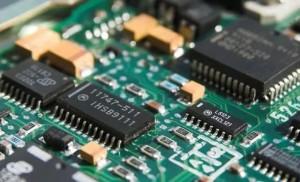Chipmakers are facing a new set of challenges. The industry is under threat from new risks after the COVID-19 pandemic created supply chain problems. Russia, one of the world’s largest suppliers of noble gases used in semiconductor production, has begun restricting exports to countries it considers hostile. These are so-called “noble” gases such as neon, argon and helium.
This is yet another tool of Putin’s economic influence on countries that have imposed sanctions on Moscow for invading Ukraine. Before the war, Russia and Ukraine together accounted for about 30 percent of the supply of neon gas for semiconductors and electronic components, according to Bain & Company. The export restrictions come at a time when the industry and its customers are beginning to emerge from the worst supply crisis. Last year, automakers cut vehicle production sharply due to chip shortages, according to LMC Automotive. Deliveries are expected to improve in the second half of the year.
Neon plays an important role in semiconductor production as it involves a process called lithography. The gas controls the wavelength of light produced by the laser, which inscribes “traces” on the silicon wafer. Before the war, Russia collected raw neon as a by-product at its steel plants and shipped it to Ukraine for purification. Both countries were major producers of Soviet-era noble gases, which the Soviet Union used to build military and space technology, yet the war in Ukraine caused lasting damage to the industry’s capabilities. Heavy fighting in some Ukrainian cities, including Mariupol and Odessa, has destroyed industrial land, making it extremely difficult to export goods from the region.
On the other hand, since the Russian invasion of Crimea in 2014, global semiconductor manufacturers have gradually become less reliant on the region. The supply share of neon gas in Ukraine and Russia has historically hovered between 80% and 90%, but has declined since 2014. less than a third. It’s too early to say how Russia’s export restrictions will affect semiconductor makers. So far, the war in Ukraine has not disrupted the steady supply of chips.
But even if producers manage to make up for lost supply in the region, they could be paying more for the vital noble gas. Their prices are often difficult to track because most are traded through private long-term contracts, but according to CNN, citing experts, the contract price for neon gas has risen fivefold since the invasion of Ukraine and will bring remain at this level for a relatively long period of time.
South Korea, home to tech giant Samsung, will be the first to feel the “pain” because it relies almost entirely on noble gas imports and, unlike the US, Japan and Europe, has no major gas companies that can increase production. Last year, Samsung It surpassed Intel in the United States to become the world’s largest semiconductor manufacturer. Countries are now racing to boost their chip production capacity after two years of the pandemic, leaving them brutally exposed to instability in global supply chains.
Intel offered to help the U.S. government and earlier this year announced it would invest $20 billion in two new factories. Last year, Samsung also pledged to build a $17 billion factory in Texas. Increased chip production could lead to higher demand for noble gases. As Russia threatens to limit its exports, China could be one of the biggest winners, as it has the largest and newest production capacity. Since 2015, China has been investing in its own semiconductor industry, including equipment needed to separate noble gases from other industrial products.
Post time: Jun-23-2022












